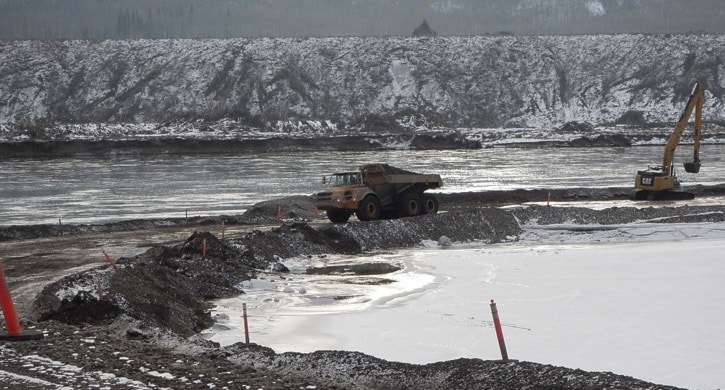With drill rigs at a standstill awaiting liquefied natural gas export projects, the start of the Site C dam is keeping the lights on for B.C. workers who would otherwise be joining other westerners in the unemployment line.
Energy and Mines Minister Bill Bennett announced Wednesday that there are 1,547 people now working at Site C, the third hydroelectric dam on the Peace River, and nearly 80 per cent are B.C. residents.
"So all of the dire predictions that this project was somehow going to have to be built by those from other provinces, temporary foreign workers, etc., have proven to be baseless predictions," Bennett said.
It is slightly ahead of schedule and on budget, with more than $4 billion in contracts let to build the main civil works and the turbines and power facilities. Completion is expected in 2024, after the river is diverted near Fort St. John and the earth-filled dam and powerhouse are constructed in the riverbed.
Bennett insisted the is not accelerated for the political purposes of the B.C. Liberals, who are seeking a fifth term of majority government in May 2017.
A growing population and economy, plus a push to shift to electric cars and other fuel reduction strategies are all dependent on increased use of electricity, he said.
BC Hydro CEO Jessica McDonald said it has proven to be "an ideal time" to build Site C, with interest rates at historic lows and workers available nearby due to downturns in petroleum and mining industries.
Bennett said one of the remaining risks to the project budget and local employment is if the rest of the economy improves and competition for skilled workers increases.
B.C. Supreme Court and Federal Court decisions have upheld the province's ability to proceed after aboriginal consultations.
The West Moberley and Prophet River First Nations have applied for review of the provincial permits awarded to BC Hydro, and an appeal of one of the earlier cases is also ongoing.



